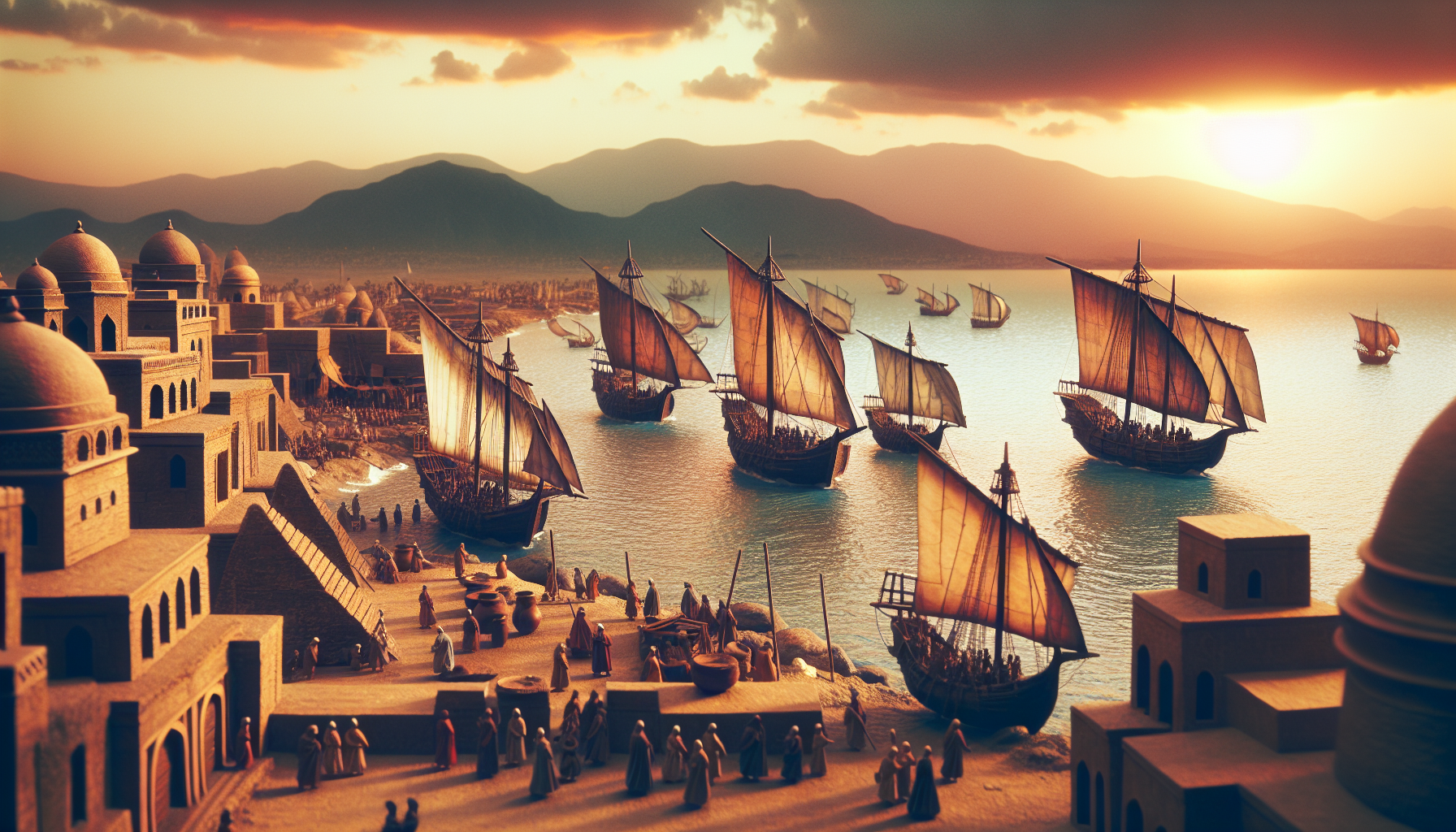When we think of history, we often picture vast empires, mighty conquerors, and grand battles. But what if we told history from a different perspective of not from the land, but from the sea? The Indian Ocean, often overlooked in mainstream historical narratives, has been a silent witness to some of the most profound cultural, political, and economic exchanges in human history.
For centuries, it served as a vast highway of commerce, ideas, and migration, linking diverse civilizations from Africa and the Middle East to India and Southeast Asia. More than just a body of water, the Indian Ocean was an invisible bridge, connecting people, beliefs, and ambitions across time.
“History is not just written on land—it is carried by the tides, whispered by the winds, and etched into the waves.”
Answer Lies Across the Sea
In 731 AD, the powerful Pallava kingdom in southern India faced an existential crisis. The reigning king, Parameswara Varman II, had died suddenly without a direct heir, leaving the kingdom vulnerable to rival claimants and foreign invaders.
A grand assembly in Kanchipuram decided to seek a successor from a distant collateral branch of the Pallava dynasty. This led to a delegation of scholars embarking on an arduous journey across jungles, rivers, and the open ocean to find Hiranya Varman, a foreign ruler distantly related to the Pallava bloodline. Among his four sons, only the youngest, a twelve-year-old boy, agreed to take the throne, setting sail towards an uncertain fate.
This unlikely ruler, Nandi Varman II, would go on to shape the destiny of the Pallavas, not just preserving their kingdom but also reinforcing deep maritime connections between India and Southeast Asia. This story is an example of how leadership, legitimacy, and politics were not confined to land; they flowed across waters, carried by merchants, scholars, and rulers seeking solutions beyond borders.
“The tides of history often shift with the boldest of choices, made in moments of uncertainty.”
A Vast Maritime Network That Preceded Globalization
Long before the age of European exploration, the Indian Ocean was a thriving hub of trade, diplomacy, and cultural exchange. Merchants from Arabia, Persia, India, China, and Southeast Asia crisscrossed these waters, exchanging spices, textiles, metals, and even religious ideas.
- Ports like Mahabalipuram and Kedah (Malaysia) bustled with ships carrying goods and travelers between India and Southeast Asia.
- The Khmer Empire (modern Cambodia) developed strong ties with the Pallavas, evident in shared architectural styles and linguistic influences.
- Hindu-Buddhist influence spread across Southeast Asia, shaping societies in Indonesia, Thailand, and beyond.
But trade wasn’t just about goods—it was about relationships. Marriages between merchant families across regions blurred cultural boundaries. Languages borrowed words from each other. Religious beliefs merged, creating entirely new traditions. The Indian Ocean was less of a barrier and more of a bridge.
The Matrilineal Connection
One of the most intriguing aspects of the Pallava story is the role of women in securing royal legitimacy. Many Indian dynasties traced lineage through the male line, but the Pallavas emphasized descent from Naga princesses—rulers of a powerful serpent-worshipping clan.
- In Southeast Asia, matrilineal traditions were common, with power often passed through the mother’s line.
- Royal marriages cemented alliances, ensuring a dynasty’s claim to legitimacy on both paternal and maternal sides.
- Nandi Varman II, despite being born far from Kanchipuram, could claim ‘pure’ Pallava heritage because of his mother’s lineage.
This wasn’t just about politics—it was about identity. The ocean didn’t just move people and goods; it moved stories, bloodlines, and the very essence of dynasties.
“Bloodlines are more than inheritance—they are the wishpers of the past, woven into generations.”
The Churning of Cultures and Ideas
The impact of Indian Ocean exchanges wasn’t limited to India and Southeast Asia. The ocean linked the African coast, the Arabian Peninsula, and the Far East into one vast, interconnected system.
- The Swahili Coast of Africa absorbed Indian and Arab influences, leading to a unique fusion of languages, architecture, and trade practices.
- The Persian Gulf connected merchants from Mesopotamia to Indian ports, influencing everything from cuisine to religious practices.
- Even China was part of this network, with records of Chinese monks and traders visiting India for centuries.
This continuous movement of people and ideas challenges the notion that civilizations evolved in isolation. Instead, the Indian Ocean was a melting pot where diverse cultures influenced one another in ways we are only beginning to appreciate.
“Civilizations are not built in isolation; they are shaped by the unseen hands of travelers, traders, and storytellers.”
Colonial Disruption and the Shift to the Atlantic World
For centuries, the Indian Ocean remained central to world affairs. However, by the time of European colonial expansion, its dominance began to wane.
- The Portuguese, Dutch, and British took control of key trade routes, disrupting traditional networks.
- The discovery of the Americas and transatlantic trade shifted global focus westward, diminishing the Indian Ocean’s role.
- The opening of the Suez Canal in 1869 revived Indian Ocean trade, but it was largely under European control.
Yet, despite these disruptions, the legacy of Indian Ocean exchanges persisted. Many of today’s cultural and economic links between South Asia, the Middle East, and Africa can be traced back to this maritime past.
Reclaiming the Forgotten Ocean
Today, as global trade patterns shift and geopolitical attention returns to the Indo-Pacific, the Indian Ocean is regaining significance. Nations bordering its waters are once again becoming economic and political powerhouses.
- India, Indonesia, and East Africa are emerging as major players in global trade.
- Maritime security and resource competition are drawing international focus back to these waters.
- Cultural rediscovery is shedding new light on the ancient connections that once bound these regions together.
Understanding this history isn’t just about the past—it’s about recognizing the forces that continue to shape our world.
“The ocean never forgets. The waves carry echoes of history, waiting for those who choose to listen.”
Final Thoughts
The true story of civilization is as much about the sea as it is about the soil. The Indian Ocean’s rich history reminds us that the world has always been interconnected, shaped not just by kings and conquerors, but by merchants, sailors, scholars, and migrants who crossed these waters in search of opportunity.
By shifting our perspective—from inland kingdoms to coastal networks, we gain a fuller understanding of how civilizations grew, interacted, and transformed. And as the Indian Ocean rises once more in global importance, its history holds valuable lessons for the future.
“The sea does not divide us; it connects us. The Indian Ocean has always been a bridge between worlds—past, present, and future.”



